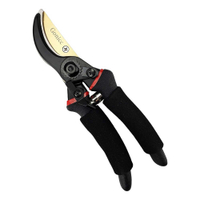How to prune tomato plants: an expert guide on trimming cordon and bush varieties
The pros share their top tips on how to prune tomato plants to get the most from your crop
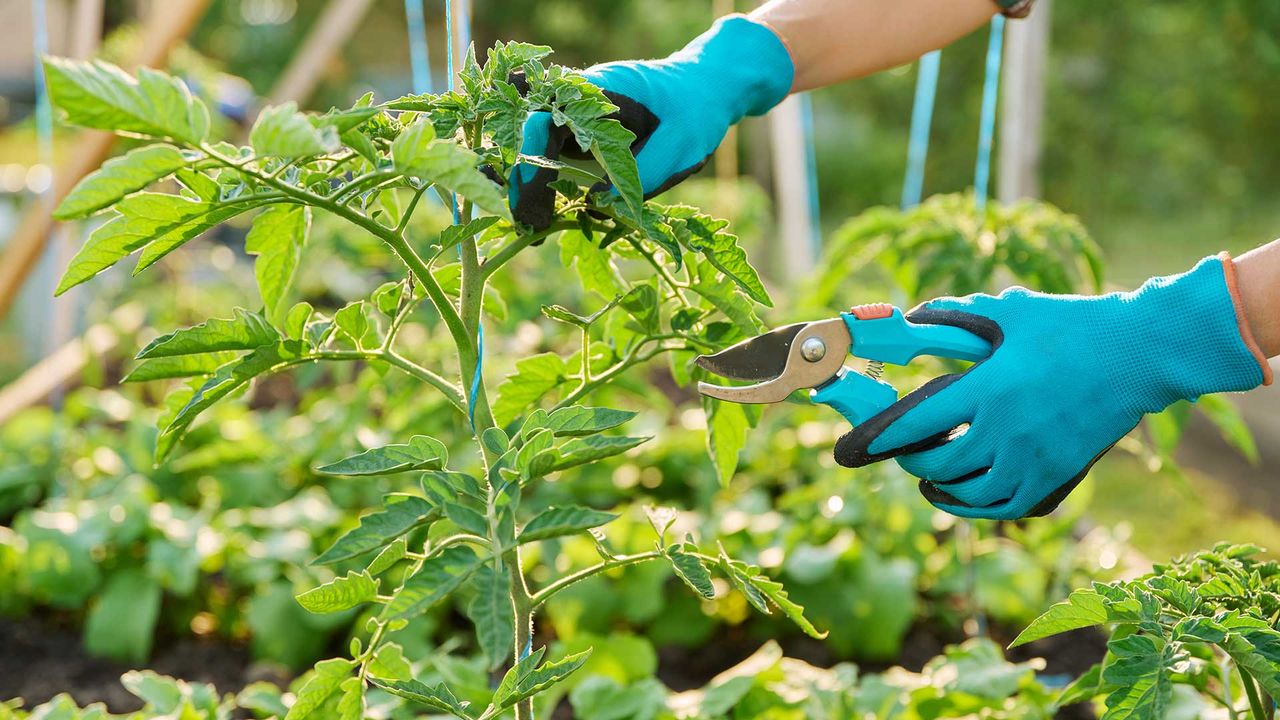

Knowing how to prune tomato plants is worthwhile when growing these tasty fruits. However, the right approach depends on the type of tomato you’re growing.
The two main groups of tomatoes are cordon (sometimes called indeterminate) and bush (or determinate). The former grow tall, while the latter are better for compact spaces and container garden trends.
Cordon tomatoes are the ones that benefit the most from a trim, as it keeps their size under control and encourages better yields. Bush tomatoes, on the other hand, can be more or less left to their own devices.
For advice on this summer garden job, I turned to the gardening experts. Below, they reveal their top tips, including recommended timings and tools.
How to prune tomato plants, according to gardening pros
Follow these easy gardening tips on how to prune tomato plants for the best results from your summer crop.
How to prune cordon tomatoes

Pruning can help you get the best results from your tomatoes
Cordon tomatoes are usually grown on a tall, single stem. Examples of this type include “Shirley”, available from Crocus, and “Ildi”, from Thompson & Morgan – a yellow, cherry variety.
Nelly Hall, the brand director at Alitex, says cordon tomatoes are continuous growers that can reach impressive heights if not managed properly. “Regular pruning is essential here,” she says.
Sign up for the woman&home newsletter
Sign up to our free daily email for the latest royal and entertainment news, interesting opinion, expert advice on styling and beauty trends, and no-nonsense guides to the health and wellness questions you want answered.
She explains how removing the suckers prevents the plant from becoming too bushy and directs its energy towards producing fruit. “This also helps improve air circulation and helps reduce the risk of disease," she adds.

Nelly Hall, a passionate co-owner and creative brand director of Alitex Glasshouses, combines horticulture with creativity that runs through the heart of the business. She cultivates a culture of engagement and sustainability, ensuring Alitex is renowned for being authentic and experts within their field.
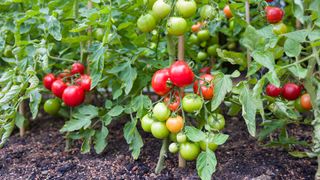
Cordon tomatoes benefit from regular pruning
The technique for this is simple: according to Pim Dickson of Mr Fothergill's Seeds Limited, all you need to do is remove the little shoots that appear in the crook above where a leaf joins the main central stem.
“When an indeterminate tomato is tall enough and fills the space you want, you can then pinch out the growing tip, so it grows no taller,” Pim continues. “Usually this is when six to seven trusses of fruit have started to set.”
Lower leaves that have turned yellow can also be removed as the crop matures, Pim adds. “This will help fruit ripen and reduce the chance of disease from dying leaves.”
There are other benefits to pruning these tomatoes, too. Petar Ivanov, a gardening expert at Fantastic Services, highlights how it makes it easier to see and pick the tomatoes and reduces hiding places for pests.
Top tip: As well as pruning, these plants need support. If you're using soft twine, consider Sarah Raven's advice on tying in climbing plants. We also like the look of this adjustable tomato crop booster frame from Crocus.

Pim has over 30 years of experience in the horticulture industry, working in roles focused on wholesale nursery plant production, international purchasing, product development and origination, horticultural content creation, and management. Pim is also a member of the Chartered Institute of Horticulture.
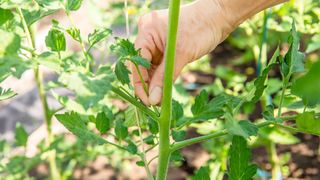
Pinch out the side shoots from your cordon tomatoes
How to prune bush tomatoes
Nelly explains that bush tomatoes grow to a certain size, set fruit, and then stop growing. This makes them easier to care for, and perfect for small gardens.
“Because they have a set growth pattern, they require little to no pruning," she says. Her advice is to simply trim away the bottom leaves to prevent them from touching the ground beneath.
Examples of bush tomatoes include “Red Alert” from Crocus, a sweet-tasting cherry variety. Meanwhile, a favourite variety of Nelly’s is “Veranda Red” (available from Thompson & Morgan). They are a beautiful addition to summer salads, she says, and can be grown on greenhouse benching due to their relatively compact size.
Top tip: Pim notes how larger types of bush tomatoes only need support if the trusses of fruit get too heavy.
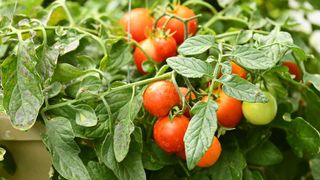
Bush tomatoes are more compact in size
FAQs
What tools should you use to prune tomatoes?
Now you know the techniques for how to prune tomato plants, you may be wondering which tools to use.
Petar recommends using sharp, clean pruning shears to make clean cuts without damaging the plant. These essential garden tools will also come in handy when deadheading other plants in your plot. “Garden scissors will help you with smaller and more delicate cuts,” he adds.
You can also pinch out smaller side shoots with your fingers, notes Nelly.
“Make sure to wear gloves to protect your hands from the plant’s sap, which can cause skin irritation,” Petar notes. These gardening gloves from Sarah Raven are machine washable, with different sizes available.
Gonicc 8" Professional Secateurs: RRP: £29.95 Now £16.95 at Amazon
These ergonomically designed secateurs include a titanium steel blade and have plenty of great reviews.
When should you prune tomatoes?
Nelly recommends pruning indeterminate tomato plants every couple of weeks for bigger, juicier fruits. She also advises carrying out the task first thing in the morning, after watering the plants.
Petar adds: “If the plant looks stressed or unhealthy, reduce the amount of pruning to avoid further stress.”
Looking for more tips on growing your own delicious crops? Our guide on vegetable gardening for beginners has plenty of practical advice.

The garden was always a big part of Holly's life growing up, as was the surrounding New Forest where she lived. Her appreciation for the great outdoors has only grown since then; she's been an allotment keeper, a professional gardener, and a botanical illustrator. Over three years ago, Holly started writing about plants and outdoor living full-time, first for Gardeningetc.com and now for popular lifestyle titles such as Homes & Gardens.
-
 Katie Holmes broke an unspoken fashion rule in tights and mules - her shoes are available for less than £100 on Amazon
Katie Holmes broke an unspoken fashion rule in tights and mules - her shoes are available for less than £100 on AmazonThe statement gold kitten heels are a surprisingly versatile spring staple
By Charlie Elizabeth Culverhouse Published
-
 The diet linked to longer and better sleep, revealed by new study
The diet linked to longer and better sleep, revealed by new studyThe study looked at data from tracking apps to see what foods were more likely to lead to better sleep
By Kat Storr Published
